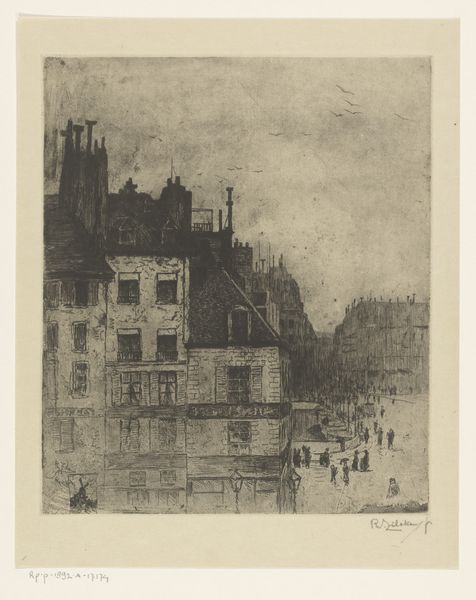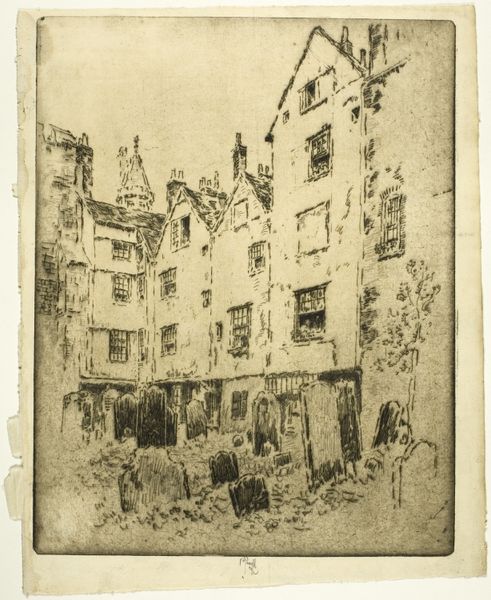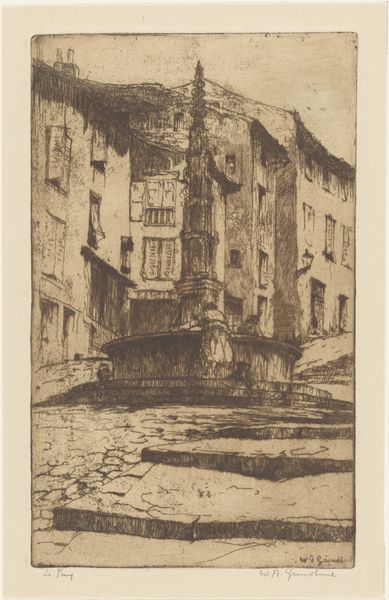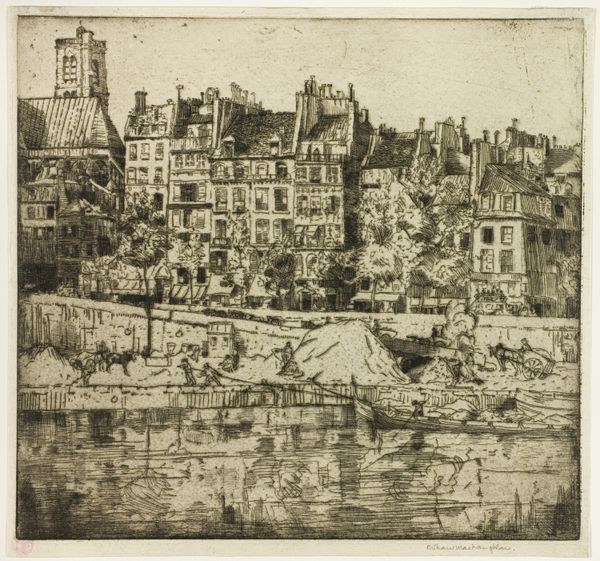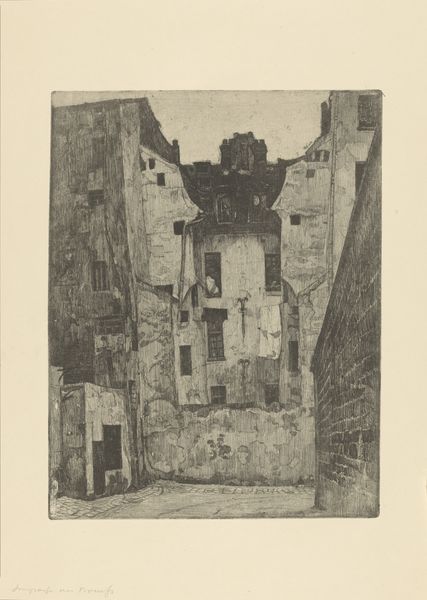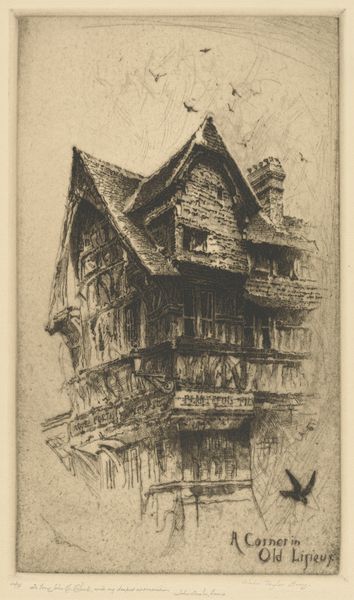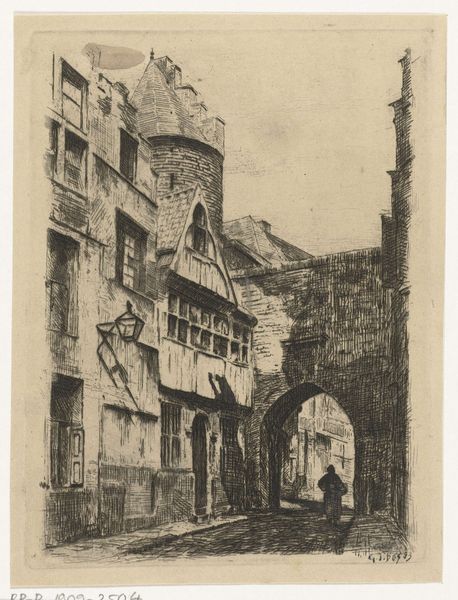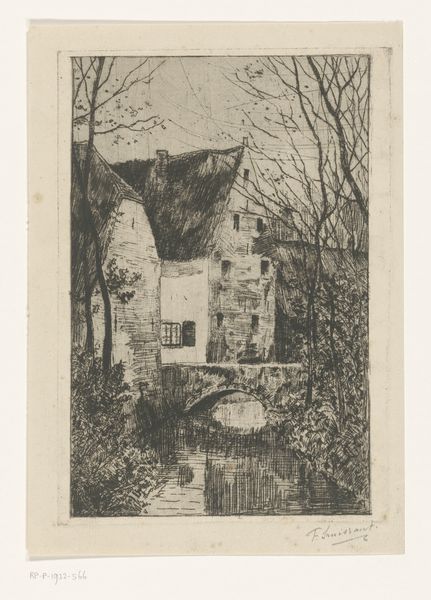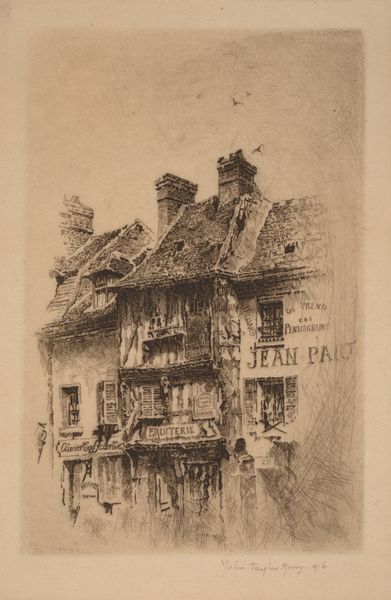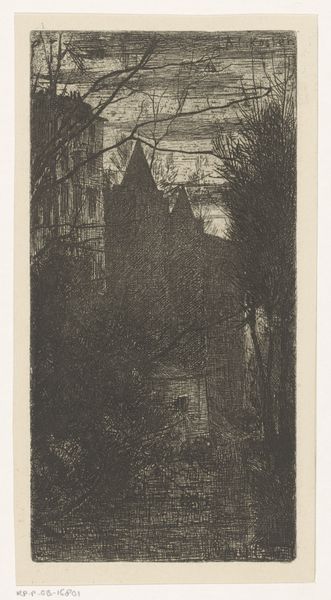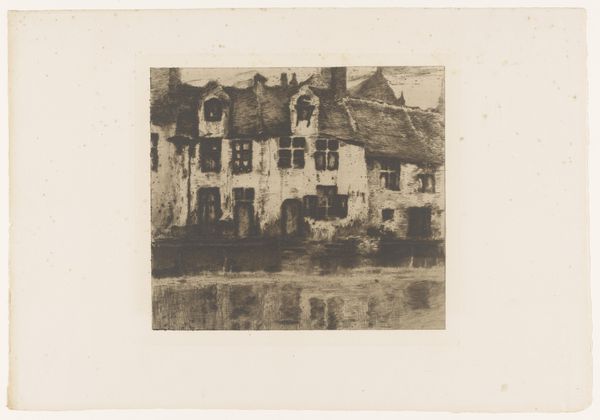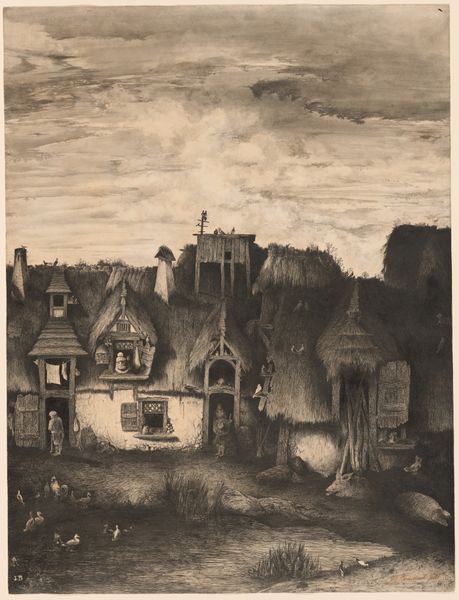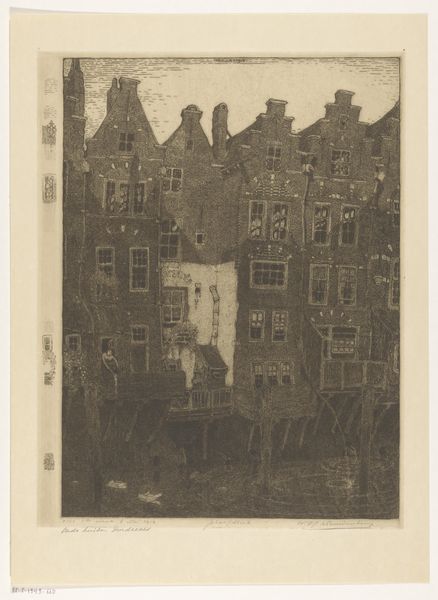
drawing, print, etching
#
drawing
#
dutch-golden-age
# print
#
etching
#
cityscape
#
realism
Dimensions: height 187 mm, width 118 mm
Copyright: Rijks Museum: Open Domain
Editor: We’re looking at Willem Adrianus Grondhout's "Oudezijds Kolk in Amsterdam," an etching somewhere between 1888 and 1934. It's incredibly detailed for such a small print; I'm really drawn to how he's captured the reflections in the water. What aspects of Amsterdam and its history do you think Grondhout is highlighting in this particular scene? Curator: That’s a keen observation. Grondhout is indeed capturing a very specific moment in Amsterdam's urban evolution. Notice how the architecture – the gabled houses and signage - speaks to a history of trade and mercantile activity, of course. But look closer – the print isn’t just about romanticizing the past. Consider that towards the late 19th and early 20th centuries, Amsterdam, like many European cities, was grappling with modernization. Editor: So, he’s presenting a potentially conflicted view? Curator: Exactly. Think about what’s *not* shown as much as what is: the rise of factories or industry that transformed the city. This etching could be read as a kind of preservation, a commentary on the importance of maintaining historical memory in a rapidly changing urban landscape. He positions this historic scene to ensure the burgeoning influence of the capital doesn’t entirely erase these visual traces of Amsterdam’s character. What do you make of the viewpoint? Editor: It feels very accessible, like he's placing the viewer right there on the bridge, part of daily life. That contrasts with the monumental or grand paintings sometimes used for cityscapes. Curator: Precisely. This approachable perspective reinforces the idea of Amsterdam as a lived, experienced city. It wasn’t just about the grand narratives of progress; it's equally the accumulation of ordinary, lived moments. I like that it creates a sense of connection to a particular place and moment. Editor: That's something I hadn't considered. Thinking about it as a record of everyday life during this transition, makes it even more powerful. Curator: Indeed, and these prints were accessible to a broader public and not only hung on the walls of the wealthy; these are records for the masses. Now that’s something.
Comments
No comments
Be the first to comment and join the conversation on the ultimate creative platform.
